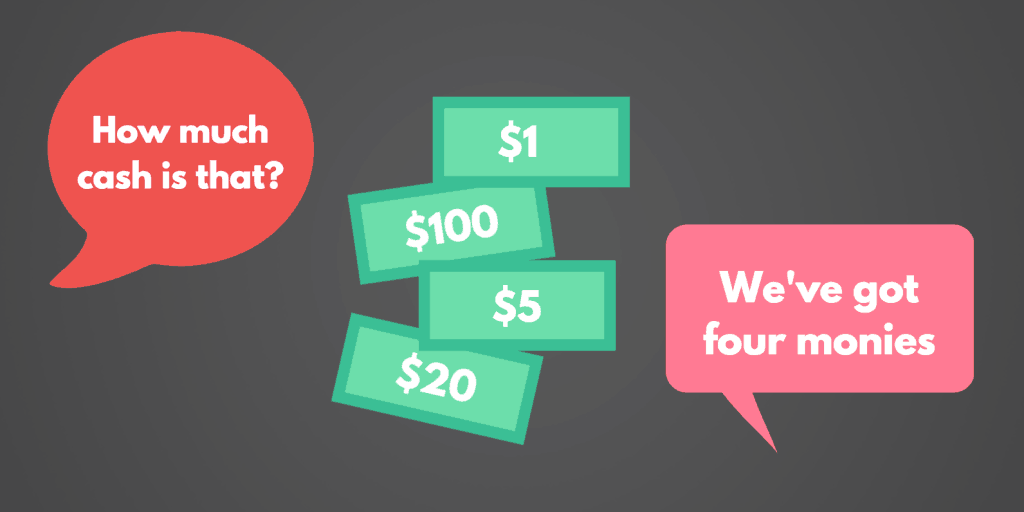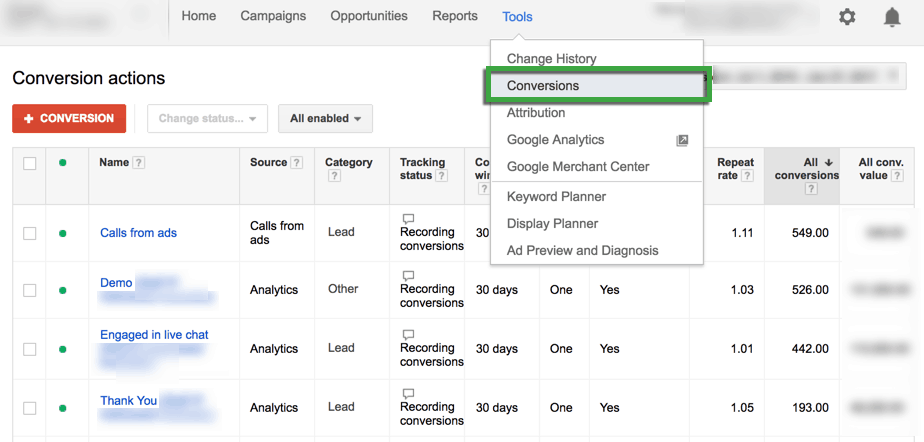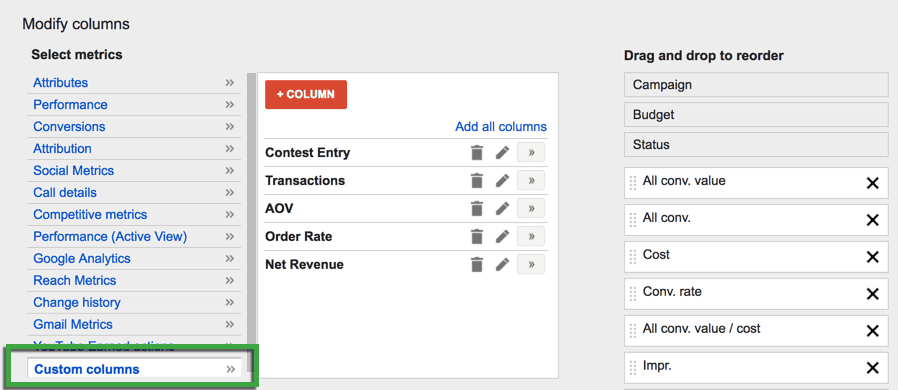What the Heck is a Conversion?

When I meet with clients, I always like to explain that instead of focusing on secondary metrics (like impressions or clicks), it’s better to look at business goals – primary metrics such as conversions.
Problem is, most people don’t know what that means.
“Conversion” can mean many things
I’ve been speaking the language of “PPC” for a while, and even though I understand that people don’t intuitively know what CTR means, it’s easy to forget that there’s not even an established agreement on what is meant by “conversion.”
A click is always a click.
A headline is always a headline.
But a conversion is an amorphous word that can mean almost anything to any particular organization.
In the context of Paid Search, a conversion happens when someone clicks your ad and then takes an action that you’ve defined as valuable to your business. But what is valuable (and trackable) to your company can vary wildly. Here are some examples of different behaviors that can be tracked as conversions:
- Site engagement – action someone takes on your website, including:
- button click
- video view
- online chat
- view of a key page
- progression on a quiz
- click off the site
- Calls and texts – tracked phone calls (usually with call forwarding) that can be measured by:
- count of calls or texts
- duration of calls
- content or quality of texts or calls
- Form completion – often tracked by arrival on a thank-you or confirmation page:
- newsletter signup
- request for info
- download
- request for quote
- application
- Pre-order or purchase – usually (though not always) expressed in sales revenue
- Offline activity – such as store visits or store purchases
It’s very important to note that any and all of these actions can be tracked as conversions within the same account.
A site can be tracking a rejected application and giving it the same weight as a successful application. A campaign that counts a second page view as a conversion will naturally have a higher conversion rate than one which tracks as conversions the completion of a detailed lead-gen form.

Are you speaking your clients’ language?
If you do paid search in an agency setting, you’re probably used to talking to clients in terms of impressions, clicks, and conversions.
Your clients probably don’t speak that language.
Never mind that they don’t swim in PPC waters, and that they might not ever discuss quality score outside of your presence. When it comes to their most important business objective – likely the reason they hired you – you might not be working with a shared vocabulary.
Lead generation has its own funnels, and most processes do not refer to a “conversion stage” in their customer journey:
- Subscribers
- Contacts
- Lead Inquiries
- Marketing Qualified Leads
- Sales Qualified Leads
- Opportunities
- Customers
E-commerce seems like it would be much easier to report on, but the conversion value and conversion / cost data from within the engine interface can be significantly different from what’s true for your client, because the interface typically:
- Does not include your management fees
- Does not factor in production costs
- Does not import returns data
- Counts non-revenue charges (taxes, shipping & handling fees, etc) as total revenue
- Does not consider the impact of other channels in its attribution
- Doesn’t factor in life time value
The data we have by default is unlikely to match what the client sees and experiences. Using this data to build reports and create narratives can lead to further confusion.
Launch a conversion convergence
For your paid search accounts to run well, you should understand what’s happening with conversions, and everyone should agree on what a conversion is.
You’ll lose a lot of trust if you’re reporting on Total Conversions and calling them leads, then later find out that the conversions you’re reporting on also include page views.
Here are three ideas that can help you get clarity on conversions:
1. Know what you’re reporting on
The first step in sorting out conversions is to get under the hood and look at what’s going on in your account.

Looking at AdWords’ Conversion Actions view (under “Tools”), you can begin to answer essential questions, such as:
- What types of conversions are you tracking?
- How are they tracked?
- Is each action counting as a conversion in the data you report to your client?
- Is there variance in the conversion windows of each conversion type?
- What’s the repeat rate – are there some conversions happening significantly more frequently than others?
- What’s the value of each conversion type?
You should be familiar with all of this information, and you should ensure your client is too.
Review anything that looks suspicious, and make sure that high-priority, macro conversions are properly weighted.
You may want to document this information and include it in reports or strategy guides.
2. Treat each conversion type differently
If you’re tracking multiple conversion types, you’ll want to report on them differently. This is fairly intuitive, right?
“Interacted with two real estate customers” is not nearly as useful as “Gave out one brochure. Sold one house.”
Micro conversions (early stage / easy / low-value actions) should be reported on differently than macro conversions (late stage / more difficult / high-value actions).
For some reason, most PPC platforms group all conversions together by default, which means you have to do a little more work to show performance across multiple conversion goals.
There are several ways to break out metrics for various conversions. Thanks to custom columns, you can add distinct or calculated columns directly into the AdWords interface:

Using these columns in the interface lets you optimize for specific conversion types, rather than just reporting on performance after the fact.
Again, be sure to set up reporting and client discussions so that you’re treating micro conversions and macro conversions separately. Events that have different value to the business should not be lumped together in a report as if they were the same thing.
3. Learn and use your client’s language
This last point is about basic business sense.
If your client prefers to be called Charles, you don’t call him Chuck or Chas.
You want to show respect to the person whose business you’re trying to keep.
Using the same language is an important part of respectful communication, and when you’re talking about the value you bring to someone’s business, you should do it in their terms, not yours.
Learn about their sales cycle, their customer journey, their funnel. Where do the various “conversions” you drive fit in to that process?
I’ve worked with clients who are totally comfortable using the word “conversion” to refer to what their backend system calls a “lead opportunity.” I’ve also had clients who require more translation efforts. One in particular objected to my use of “Cost per Lead” (CPL) because it should say “Cost per Lead Inquiry” (CPLI). We adjust our reports and accommodate.
Make it easy for them to understand what’s happening in their accounts.
Make it easy for them to know that YOU know what’s happening in their accounts.
A side note and a warning: These recommendations are not fool-proof. I’ve given clients reports that follow every step outlined above, with specific breakouts of all lead sources based on their own terms, and it hasn’t kept me from getting calls and emails asking if a lead means a click, or how we’re measuring account success.
Just because you speak someone’s language doesn’t force them to pay attention to you.
But at the end of the day, if you make a consistent effort to define and discuss conversion metrics on your client’s terms, you’ll be better prepared to lead discussions, make recommendations, and quickly answer questions about conversion data.
Want to know more? Need to start getting better AdWords results? Learn more about AdWords & Paid Search Coaching with Amy here.
If you feel the same way, join us here. You'll get our latest content and podcast episodes that will teach, inspire, and motivate you to achieve new levels of success with Paid Search.Here at Paid Search Magic, we get pretty excited about all things related to getting better RESULTS in Paid Search Marketing.

